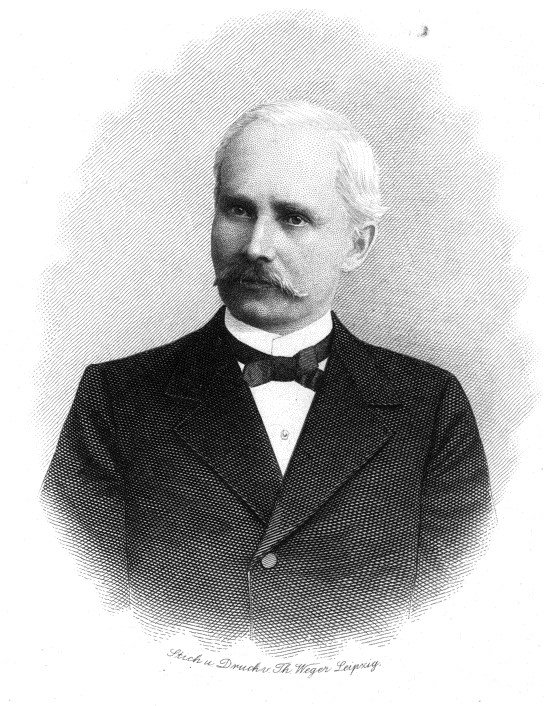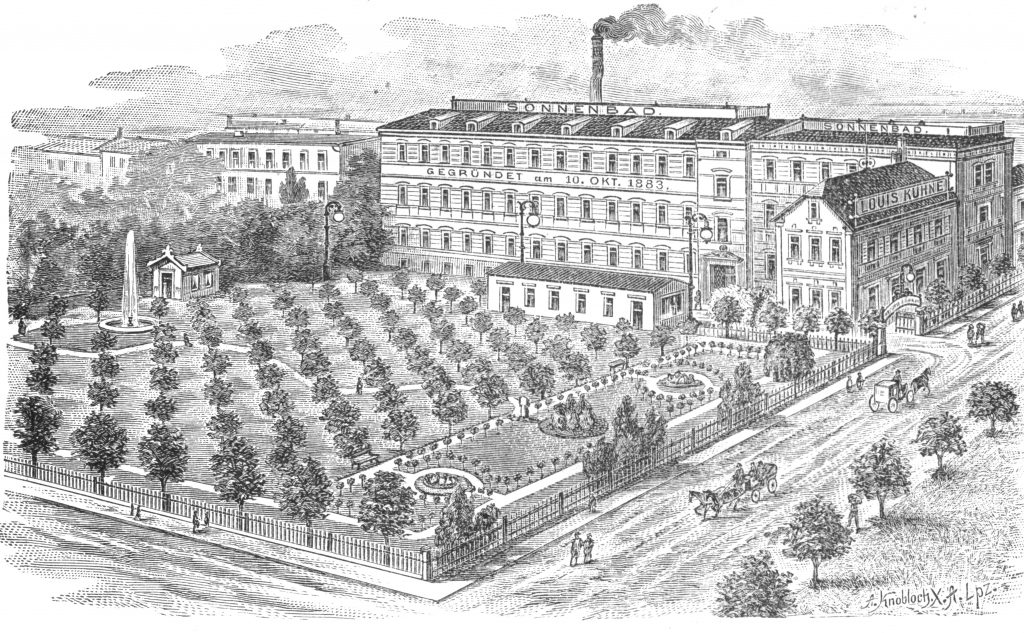Nature Cure Clinical Pearls: Based on Kuhne

Louis Kuhne stands rightfully tall on the naturopathic landscape while he indeed contributed hugely to its philosophical and knowledge base. Kuhne's understanding of healing came first-hand from his personal suffering with stomach cancer and lung complaints. As he was Two decades old, he experienced severe violent pains within the lungs and head. Witnessing the death of his father from stomach cancer to see his chronically ill mother repeatedly mistreated by physicians were strong catalysts that directed his life. He exhausted medical doctors' abilities to alleviate his suffering and then considered natural medicine, which helped him. Although not quite enough, the fact is.

Figure 1. Louis Kuhne, 1835-1901
Unable to alleviate his health problems using conventionally available methods, his love and observations of Nature guided him to find enduring solutions. After suffering for pretty much a quarter of the century, his experimentations on himself led him to a discovery that culminated in his writing 2 important books: The New Science of Healing , and Science of Facial Expression , which may guide generations of Naturopaths around the world within the Twentieth century. By the seventh German edition in 1894, The New Science of Healing had been published in 25 languages. So popular was the work of Kuhne that his teachings went viral globally. By 1899, his book had reached its 50th edition and was seminal in uncovering “Nature's definite and immutable laws.”

Figure 2. Kuhne Book Ad, 1917
Unity of Disease, Unity of Cure
Kuhne discovered that there were many manifestations of disease only 1 cause for these. In treating disease, Kuhne also determined that, just like there is only one cause for disease, there is 1 cure for disease. Called the “unity of disease” and “unity of cure,” this seemingly oversimplified idea of disease and cure had at its core immensely valuable tenets that actually worked clinically. The last chapter in The New Science of Healing comprises 133 cases providing proof that Kuhne's theories had merit.
It is important to note that Henry Lindlahr constructed his Nature Cure philosophy and his theories principally by borrowing in the work of Kuhne and expanding them into their own. Lindlahr's use of most of the same terms utilized by Kuhne resurrected a strong foundation for Nature Cure, as well as for naturopathic medicine. The accessibility and approach of Lindlahr's books had an immense impact on the traditional roots of early naturopathic principles and philosophy in America.
What is Disease?
Kuhne began with 1 very pertinent question in his search for creating health: what is disease? In order to learn how to heal, one first must know what it is that needs to heal. In the view, disease was “the presence of foreign matter within the system.” The notion of foreign or morbid matter – an antiquated term in the 1800s – merits review and restatement to ensure that we can better appreciate Kuhne's theories within our own time.
Environmental pollutants, food additives, volatile organic compounds , solvents, and the myriad 100 000 chemical substances that inundate present times were unheard of when Kuhne was formulating his understanding of “morbid or foreign matter.” He understood foreign matter as substances introduced into the body that had room or use. More appropriate terms to share the meaning of morbid or foreign matter are endotoxins and exotoxins. When materials foreign towards the body's natural propensity for dense nutrients and balance accumulate in the human body, they become morbid over time and because of poor diet and lifestyle habits. We can turn to observations of people, or even of ourselves, to sharpen our understanding of the procedure meant by Kuhne's perception of morbid matter.
As we drill into this understanding, we might wish to start by acknowledging that our passion for food can lead us into a lifestyle of irresistible cravings rather than one where appetite is dictated by hunger. Normally indicate, the two portals for foreign matter to enter the body are generally through the nose and lungs, or by the mouth in to the stomach. The lungs are not as corruptible because the stomach. Based on Kuhne's definition, morbid or foreign matter is cumulative. To illustrate, if an individual smokes the very first time, the lungs will rebel, and coughing will ensue in an attempt to pay off the lungs. However, Kuhne notes, “As soon as we fail to promptly obey the senses of smell and taste, they grow more lax within the fulfilment [sic] of their duty, and gradually allow harmful matter to pass unchallenged in to the body.” It is in their accumulation, poor processing, as well as in the body's eventual tolerance of these that morbid matter gains ascendancy over health.
The stomach, as said before, is naturally resilient to some bad diet or overeating. Kuhne is quite articulate, though, about how we slip into improper habits of diet that contribute to the possibility morbid matter which invades and stays within our bodies. In the words,
The injurious effects of an incorrect diet are slower and fewer striking. The boundary between natural food and deadly poison is very wide. The step from the natural towards the unnatural is often so tiny as to become initially scarcely perceptible. But as we know that foreign matter only forms as the result of wrong food, that is, are only able to arise in your body as the result of bad digestion, it should be our task to avoid such wrong foods and the like bad digestion.
Alternatively, consciously choosing foods which are easily digested increases the quantity of vitality or vital force. Easily digested foods, such as those who work in their natural state, like fresh fruits and vegetables, require less time to visit with the digestive system and generate a bigger factor energy. Within this process, they don't tax your body's systems in the manner that inflammatory and otherwise inappropriate foods can and do.
How easy it is to get accustomed to foods with no vitamins and minerals. In modern society the road of foreign and morbid matter is still there, and much more perniciously, given current values in eating and food production. In Kuhne's era, the problems of food were related to overeating and the use of alcohol, condiments, and spices. Unripe fruit was chosen by Kuhne because the perfect example of food easily digested. In some, diarrhea resulted from eating unripe fruit, but this outcome illustrated the way the body rids itself of an overload of food.
Denatured Food
Kuhne advocated a vegetarian diet, and long before raw plant food was considered healthy, also, he considered cooked foods as less than optimal. In fact, he went as far as to state, “all foods which we must change by cooking, smoking, spicing, salting, pickling, and putting in vinegar, lose in digestibility, so that as regards vitality, are far inferior to food in its natural condition.”
Foods converted to fluids, for example soups, were more difficult to digest since the need for chewing was bypassed. Soup ingredients in their natural state would be solid and wish mastication. At a time when smoothies and juices are inhaled and at the same time frame are thought health food, is it amazing that constipation persists?
Another group of foods which Kuhne regarded as injurious towards the health included “foods which in their natural form create disgust and nausea – however good they may taste when cooked.” The flesh of animals fell under this category. “No you might ever consider biting right into a living ox, or eating raw sheep's flesh. Our instinct and natural feeling might be misled by seasoning and dressing.” Kuhne held strictly to the concept that “food precisely within the form Nature provides it with to us, is always the best for that digestion.”
The importance of fiber within the diet wasn't overlooked by Kuhne. White flour was another illustration of denatured food. Grains stripped of their bran and made into bread was a concern for constipation.
Digestion as Fermentation
In order to convert food into the foundations that constitute a living body, foods undergo a process of fermentation that's normal. Your body assimilates as much as it requires and excretes what's unnecessary via the intestines, kidneys, and skin.
Kuhne often took examples from Nature to describe his concepts of health insurance and disease. He writes, “Sometimes, we observe how animals completely digest, in a very short time, such apparently indigestible things as tendons and bones. When we examine the excrements of such animals, we discover simply no undigested bits of bone.” In humans, he was quoted saying, the contrary occurs: food often remains a whole week or even more in the bowels and gives rise to abnormal conditions of fermentation. The body is then required to expel these injurious byproducts of inadequate digestion through the various excretory organs.
When foods are altered by cooking, preservatives, or chemicals, a longer period is required for that body to digest these food types by fermentation. Time put in the digestive tract is longer, causing a rise of internal heat, and darker and drier stools. Longer transit amount of time in the bowels results in an abnormal progression of fermentation which finds no exit, hence depositing within the skin and blood. Kuhne called this state “encumbrance with foreign matter.”
Overeating
Today, problems of obesity trump many of the other health issues we encounter as doctors. An abundance of food, especially the calorie-rich and nutrient-deprived sorts, is eagerly consumed, and our obsession with quantity over quality compounds the problems caused by overeating. Kuhne might have described our eating routine as unnatural.
What is the right amount of food for an individual with “a diseased stomach” was another question asked by Kuhne. He writes, “One apple the debilitated stomach can digest; two would be an excessive amount of. All excess is poison for that body.” Some healthy people claim that they can possess a perfectly iron-clad digestion, capable of eating anything. Kuhne is quick to remind them and us that any amount of food beyond what is needed through the body is excess and “poison for the body and if not excreted goes to form foreign matter in the body.” The method to keep the body in a state of health ended up being to practice moderation in eating.
Foreign Matter
Foreign matter is a simple term that expresses just what it's. Foreign matter, in Kuhne's view, simply didn't belong in the body, and also the emunctories should remove it with the skin, lungs, kidneys, and bowels. Kuhne counted unhealthy food among foreign matter. He taught that if morbid or foreign matter accumulates that it is not eliminated, your body then must find a location to store it. Because we are not able to make use of the harmful waste deposited in your body, our circulation and digestion become adversely affected.
The timeline for foreign matter to accumulate and do damage is slow and insidious. Symptoms are silent at first. “Only following a considerable period does [the patient] become mindful of a disagreeable alternation in his condition. He will no longer have the same appetite and that he is not capable of exactly the same work load.”
Kuhne is credited with making the observation that the early Naturopaths adopted and regarded exactly right. “Disease begins within the stomach,” Kuhne declared. He also noted, “The foreign substances are chiefly deposited in the abdomen and lastly spread through the entire body.”

Figure 3: Kuhne Clinic, 1901
Removal of Foreign Matter
Fermentation to Fever
Kuhne known the microflora of the gut as microscopic fungi. He also made a theory of inflammation as beginning in this enzymatic tract using the accumulation of morbid matter, fermenting and creating heat that would be expressed as a fever. “Fever is fermentation going on in the system [body].” The relationship between fever and the active procedure for disease was intertwined. According to him, “There is no disease without fever and no fever without disease.” Kuhne rationalized this fermentation process needed a vent by which to depart your body. Fever unabated in the body with no outlet would ultimately result in death.
The primary reason for Kuhne's therapeutic treatments was the removal of foreign matter. “To merely drive the morbid matter in one part of the body to a different, to confine it, and allow it to dry up: all of this is no cure but merely suppression of symptoms.” When foreign matter is present, fermentation arises and fevers result. “If – morbid matter has in a suitable manner been taken off your body, the disease itself disappears.”
Steam Baths
Perspiration is the body's answer to a compromising fever. Perspiration was how Kuhne began his protocol for diseases so that they can remove foreign matter/disease from the body. “The steam bath is easily the most reliable means there's of restoring your skin to regular action.” Lying on the specially constructed table allowing the passage of steam to reach the various components from the body that were exposed, patients would lay down naked and supine, and be covered by a wool blanket. Pots of boiling water were placed underneath the table. Kuhne had devised burners to produce a continuous production of steam. Today, with modern appliances, the steam bath is definitely completed. After 10 to 15 minutes, the patient would start to steam the chest and abdomen.
Perspiration is the primary goal. “The instant the sweat breaks out, the fermenting masses obtain a vent, and also the tension of the skin and febrile heat both abate.” If the individual does not perspire while supine, when surrended, perspiration should come very easily. “Persons who do not perspire readily, ought to keep the head covered [under the wool blanket]; this will not be discovered to be so disagreeable as may initially be imagined.” Patients following Kuhne's protocol perspired for 15 to 30 minutes. Areas of the body which were more full of toxicity or morbid matter tended to perspire with difficulty.
“Weak persons, for example seriously ill, more especially nervous patients, should not take steam baths.” Sun baths are preferred for weak patients, as well as friction sitz baths and hip baths.
Hip Baths
Closing your skin pores and cooling your body after a steam bath were made by going for a friction hip bath using water within the range of 68° to 81°F/20° to 27°C. After or before the sitz bath, the whole body was quickly washed to remove perspiration and also to cool your body. Another purpose of hip or sitz baths was to mobilize the foreign matter from parts of the body, principally the abdomen, that remain undisturbed. After the hip baths and washing of the body, measures to ensure that the body was warm again included either exercise for strong-abled patients, or bed rest for weak and sick patients.
Conclusion
Kuhne advocated a proper vegetarian diet because the foundation of his new science of healing. He argued that “unnatural food can't ever be thoroughly digested, and if consumed daily,” results in an accumulation of endotoxins and what he called foreign matter, and consequently to some diseased state. Kuhne transformed his factory, that they operated successfully for 24 years, into an extremely large clinic to treat conditions that originated in this process of accumulated foreign and morbid matter.
Some types of diseases that he encountered include cancer, tuberculosis, diphtheria, scarlet fever, rheumatism, migraines, obstinate constipation, paralysis, epilepsy, whooping cough, etc, etc. His armamentarium consisted essentially of dietetic counseling, the steam bath, and also the friction hip bath. Using these therapies, his ability to help patients remains a triumph, and in so many ways unparalleled to this day.

